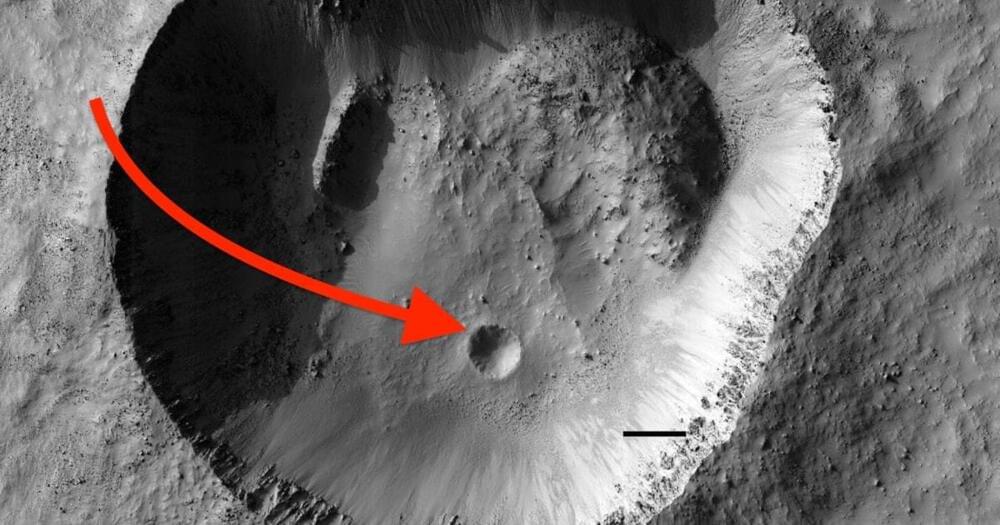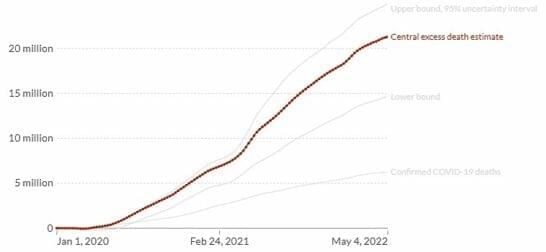Israel is a desert, and water resources are scarce, but today it produces 20% more water than it needs. What can the world learn from Israel’s experience?
Get the latest international news and world events from around the world.

Scientists discover bizarre ‘worm-like’ aurora stretching halfway across Mars
Nobody can explain why this ‘sinuous discrete aurora’ happened.
While scientists have detected discrete auroras above certain patches of the Red Planet before, never have they seen one on such a “massive scale,” the team said. The solar storm that propelled charged particles into the Martian atmosphere at a faster and more turbulent pace than usual is likely a key factor in this type of long, sinuous aurora, the researchers added.
Solar storm occurrences are predicted to increase over the next several years as the sun approaches its solar maximum — the period of greatest activity in the sun’s 11-year cycle — in 2025. The EMM’s Hope orbiter will continue watching for these newly discovered auroras in the meantime, while scientists dig into archival data collected by NASA and the European Space Agency to hunt for more examples of the snake-like streaks over Mars.
Largest Native American cave art revealed by 3D scans
Deep in a damp cave in northern Alabama, archaeologists have made a giant discovery. On a subterranean ceiling just half a meter high, researchers have uncovered the largest cave art discovered in North America: intricate etchings of humanlike figures and a serpent, carved by Native Americans more than 1,000 years ago.
“It’s exemplary and important work,” says Carla Klehm, an archaeologist at the University of Arkansas, Fayetteville (UAF).
Although the U.S. Southwest is famous for petroglyphs carved into canyons and cliff faces, much of the southeast’s rock art is hidden underground in caves. “Forty years ago, no one would have thought the southeast had much cave art,” says Thomas Pluckhahn, an archaeologist at the University of South Florida who wasn’t involved with the paper. But over the past few decades, archaeologists including the University of Tennessee, Knoxville’s Jan Simek have shown that’s not the case.

Apple, Google, and Microsoft will soon implement passwordless sign-in on all major platforms
Soon, you could log in to everything with just your phone.
On World Password Day, Apple, Google, and Microsoft committed to broad support over the next year for secure FIDO “passkey” sign-in technology that removes the need for passwords at all.
A new quantum technique could help create planet-sized telescopes
The future of astronomy goes far beyond the James Webb Space Telescope.
For example, it’s theoretically possible to use quantum computers as a means for constructing colossal, planet-sized telescopes, according to a study shared to a preprint server and initially reported by New Scientist.
And, if we could make it work, a planetary telescope would peer much farther into the big black abyssal depths of space, and image the distant universe at untold levels of resolution.

Mars scientists discover a puzzling impact crater on the Red Planet
Most craters are circular in shape due to material ejecting out in all directions as a result of an impact. Below is a group of impact craters in Noachis Terra, a large region in Mars’ southern hemisphere. These are all classified as simple craters, which are small bowl-shaped, smooth-walled craters.
Complex craters, on the other hand, are large craters with complicated features, such as terraces, central peaks, and rims and walls their own features. Oblong craters, like the one in the lead image — which is also located in Noachis Terra — can sometimes be created by impacts striking the surface at a very low grazing angle.

Jack in the Box to trial robots for kitchen work
Jack in the Box has become the latest American food chain to experiment with automation, as it seeks to handle staffing challenges and improve the efficiency of its service.
Jack in the Box is one of the largest quick service restaurant chains in America, with more than 2,200 branches. With continued staffing challenges impacting its operating hours and costs, Jack in the Box saw a need to revamp its technology and establish new systems – particularly in the back-of-house – that improve restaurant-level economics and alleviate the pain points of working in a high-volume commercial kitchen.

World Health Organization Acknowledges Undercounting of COVID-19 Deaths
Not 6 million but 21 million.
And it has all happened because of a virus that caught the world unprepared.
The WHO report released today states that total deaths as reported by national health authorities attributable to COVID-19 don’t take into account excess mortality, or as it describes, “the mortality above what would be expected based on the non-crisis mortality rate.”
Excess mortality is not a measure that can easily be gleaned from across the planet. Why not? Because not all countries measure mortality at the same pace and in the same way. Data reporting techniques differ. Some countries don’t even measure at all. This makes calculating excess mortality problematic.


The Tesseract, Part I
But I am a visionary by the most grounded, neutral definition of the word (and so are you, undoubtedly):
By this definition, a “visionary” is just a person who regularly envisions the future and feels a deep need to design it with care, at times with such compulsive passion that it risks defining one on a core level and consuming one with endless details of a reality which has yet to formally occur.
In my inner midnight rambles, when this archetype is in full moonlit bloom, I envision our little enclave of ultra-talented, idiosyncratic, fun-loving Austin artist family winding up in some kind of post-apocalyptic village together, almost as if we’ve been training our entire lives for this…
It feels as if this ‘apocalypse’ were such a powerful future event that it’s been gravitationally pulling us toward it for decades, and that the closer we get to it, the more we feel the unmistakable velvet touch of the ultraviolet retrocausal torsion wave cast back into the past we call ‘now’—through the Tesseract, that divine instrument of nonlinear timeline coherence and coincidence control—from this inevitable future singularity, allowing it to spark in all our nuclei an unmistakeable sense of purpose-driven directionality and community…
…This is The Tesseract, a newsletter about persistent reoccurring visions of future humans.
An exploration of a persistent vision of future humans.